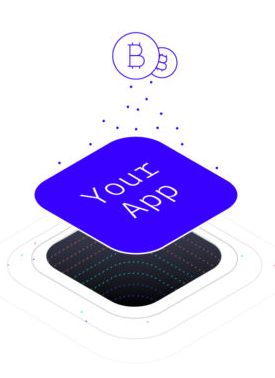Traditionally the term mining in cryptocurrency refers to the process of contributing compute resources to the network and earning a reward. On the Blockstack network, however, instead of just mining through computation, developers can mine by contributing apps to the ecosystem and making applications the community wants.

Founders that build apps using Blockstack developer tools like Blockstack Auth get paid each month, in amounts proportional to that month’s app quality ranking. Blockstack PBC, in cooperation with App.co, currently administers the payouts. A set of independent App reviewers determines the monthly ranking during the pilot phase.
How apps are reviewed
Blockstack worked with a team of Ph.D. game theorist and economists from Princeton and NYU to put together a ranking algorithm which is fair and resistant to abuse. Blockstack partnered with two different third-party reviewers, Product Hunt and Democracy.earth. These reviewers are independent, and generally rely on their own proprietary data and insights to generate rankings.
Product Hunt
Product Hunt is the place to find the best new products in tech. They have a massive trove of user data (upvotes, comments, etc), that they use for ranking. Product Hunt comes up with two different scores for each app — a “community” score and a “team” score.
Their community score is determined only by the number of upvotes an app received on Product Hunt, relative to other apps that are registered. For example, if an app got more upvotes than any other app in a cohort, their community score would be 100. If a different app got 60% as many upvotes, they’d get a score of 60.
Their team score is determined by internal team members conducting reviews on different aspects of an app. They judge based on a few criteria, like execution, uniqueness, and desirability. Each app gets ranked 1-10 on each criterion, and their final score is the average of each criterion. Finally, this average is multiplied by 10, so the highest score you can get is 100.
Once each app has a community and team score, Blockstack converts these scores into z-scores, more about z-scores below.
Democracy Earth
Democracy Earth is a platform for borderless peer-to-peer democracy. They’ve built a platform that anyone can use to gather votes in a trust-less, decentralized way.
Democracy Earth has built a platform for Stacks token holders to vote on how apps should be ranked. Each token holder gets a certain number of votes, and they can distribute those votes however they want. It’s possible to give all of your votes to a single app, and you can also “downvote” an app with one of your votes.
After a voting period, each app has a certain amount of upvotes and downvotes. First, Blockstack calculates the percentage of total votes that are upvotes. If you got 90 upvotes and 10 downvotes, you’d get a “likability score” of 90. Secondly, Blockstack calculates a “traction score”, which ranks how many total votes (including downvotes) an app received, relative to other apps.
Reaching the final scores
Once the reviewer-partners generate reviews, each app has 4 raw scores between 0 and 100 for the following:
- Product Hunt community score
- Product Hunt team score
- Democracy Earth likability score
- Democracy Earth traction score
First Blockstack’s determine a ‘z-score’ for each ranking category community, team, likability, and traction. This is a statistical technique to account for different distributions of scores within categories. Second, Blockstack computes the average and standard deviation of each category. Finally, for each app’s score in that category, Blockstack determines how many standard deviations it is away from the average score in that category.
For example, let’s say a category has an average score of 60, with a standard deviation of 15. A score of 90 would get a z-score of 2, because it’s 2 standard deviations higher than the average.
Once each app has a calculated a z-score in every category, the average of those 4 z-scores results in a final number. A higher number is better than a lower one, and so apps are ranked from highest to lowest.
Determining how much an app is paid
For each app mining cohort, there is determined a “pot” of total earnings that will get paid to apps. For the Alpha run, Blockstack paid a total of $25,000 USD. Starting in December 2018, Blockstack will pay $100,000 USD and the awards will be paid out in Bitcoin.
The top app gets paid 20% of the total pot. So, for a pot of $100k, the top app receives $20,000 USD. The next app gets paid 20% of the remaining pot. The remaining pot is $80k, and 20% of that is $16,000. This process continues until every app has been paid.
Here is a chart that visualizes the decay in rewards, depending on rank:

This first release of App Mining uses the initial version of our ranking and payout mechanism. Blockstack has taken care to be thoughtful and fair, but things may change as we learn more and get feedback from the community. Please let us know what you think by commenting in our forum or by emailing us at hello@app.co!
